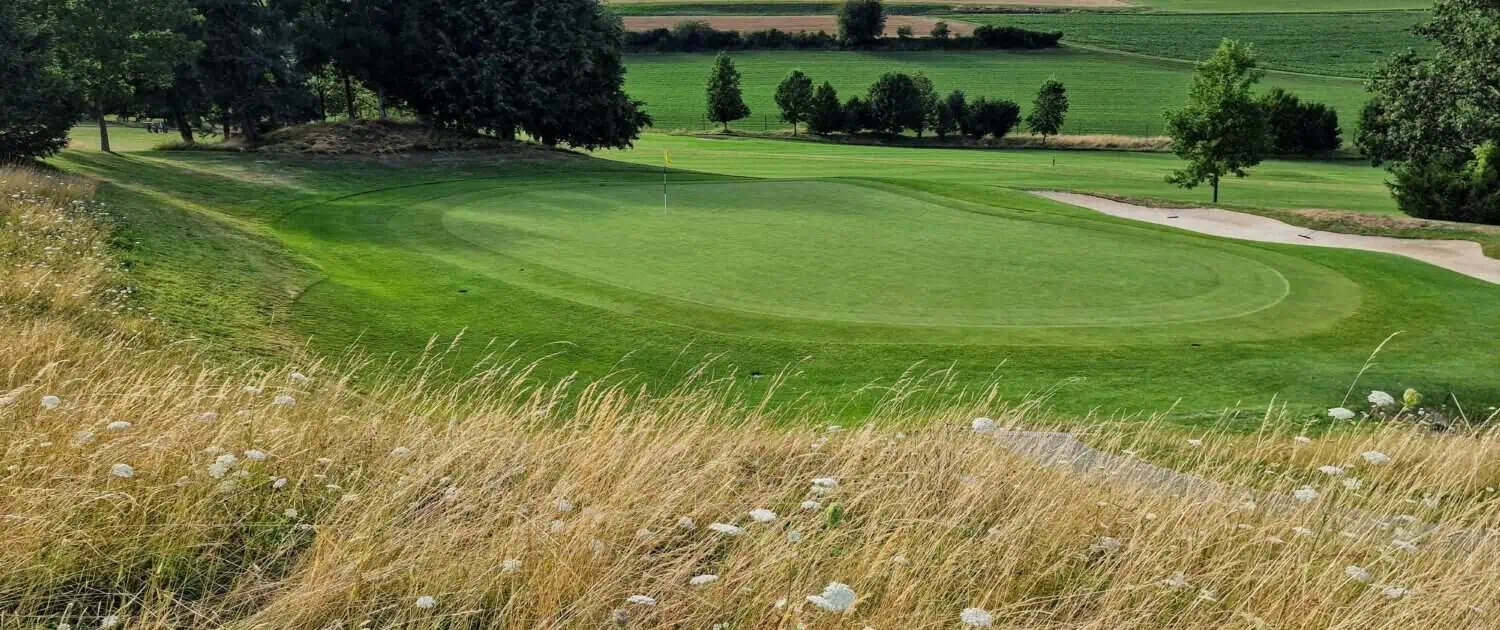Golf de Vuissens: The wrong place for climate activists
The activists’ attack on Vuissen’s golf course was months ago, when I arrived. It is a quiet village in the canton of Fribourg, less than 300 people live here. The chic cafés of the towns on Lake Geneva, the 5-star tourism of Montreux, Evians-Les-Bains or Geneva – all that is far, far away here. In the clubhouse next to the Chateau de Vuissens, whose history dates back to the 13th century, swallows nest in the holes that have formed between the thick stones in the masonry. A few golfers sit on the terrace below, along with club manager Ines Lescudier and Romain Lodieu, the head greenkeeper. The view falls far down the slope to the golf course with its 52 hectares of land nestled between fields.
It is a peaceful place that the climate activists had chosen for their protest. The question of “why” for their action arises as soon as one arrives at Golf de Vuissens. “We need to do more, we need to tell what we do here with nature. We do so much,” Ines Lescudier had said on the phone. All the accusations, extreme water consumption, social criticism, – no, here they are simply wrong.
“I was a bit taken aback,” Romain Lodieu describes his reaction to the climate protest. “There was a lack of logic there. We have had the GEO certificate since 2022, we have greatly reduced our energy consumption in the past three years, reduced our fertilizer requirements by 50 percent and switched to organic fertilizer, massively reduced the consumption of plastic bottles and other plastic, bought new recycling bins,” he lists the measures for more environmental protection. “The complete attitude in running the course has changed,” Lescudier sums it up.
Species-rich meadows for more biodiversity
Then they drive out onto the course, pointing out all the meadow pieces they’ve created on the edges of the fairways, behind the greens since 2018. No, with 52 hectares of land, there are no huge areas left for extensive plots, but for this, the theme of “regionality” works perfectly in the creation of this species-rich meadow. Lodieu obtains the seed from local farmers after they have harvested their meadows, then spreads it on his land.
Sheep for grazing
The sheep, which on this day lie sleepily in the shade on a fenced-off piece of land next to a fairway, do the mowing. They belong to a local farmer, “we talk to each other about the areas,” says the greenkeeper. In general: the farmers here and the golf club, there is no fear of contact. The elitist image attached to many a Swiss golf club does not apply to this facility. Since construction began in 2001, Vuissens has always been a club that has had to court members and guests. Away from the big Swiss cities and the classic tourist routes, you are more likely to meet those players who are looking for a good golf course, peace and nature. The ambience with the restored castle is charming, but definitely not a case for the big influencer appearance.
Minimum irrigation without drinking water
Without the golf course, the valley would be full of fields that now mark the boundaries of the sports facilities. Which brings us to the big criticism of the climate activists at their appearance in Vuissens, the water consumption for the sprinkling of the course. This summer the fairways are green, the many rains in the spring made sure of that. In 2022, when it hardly rained, the square was brown. Very brown. The reason for this is that there is only fairway sprinkling on two holes, so the appearance of the course changes with the weather. Sometimes green, sometimes brown.
The use of drinking water is not an issue here. Sprinkling of the areas is limited to greens and tees. The course needs 12,500 m³ of water on average. This means that it is probably also in the lowest range in a Swiss comparison. The problems of isolated other golf facilities pondering how to get off sprinkling with potable water and educating their members about the need for forward-thinking water management are not encountered here. In 2017, they updated all sprinklers, and in 2021, they purchased a new pump station, which also minimizes the need.
At the lowest point of the golf course area are the supply ponds, where the drainage water accumulates, which is drained here from the slopes and fairways. They are full this summer, but even in dry years there is enough for the critical areas of the greens and tees. “We now want to network the ponds even more so that we can further optimize the water supply,” says Lescudier, explaining the next project.
Only recently, she also explained this to the television team of RTS. These journalists had also been led to Vuissens by the climate activists’ protest action. The issue of golf being a water waster has been in the news across Europe this summer. The accusation of wasting drinking water or using too much groundwater – it may apply to isolated golf courses. In Golf de Vuissens, however, the climate activists were definitely out of place.








